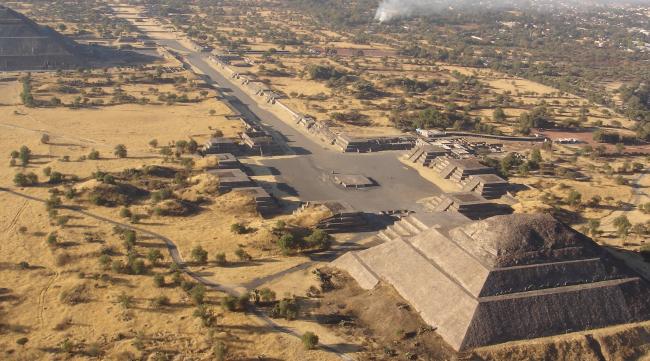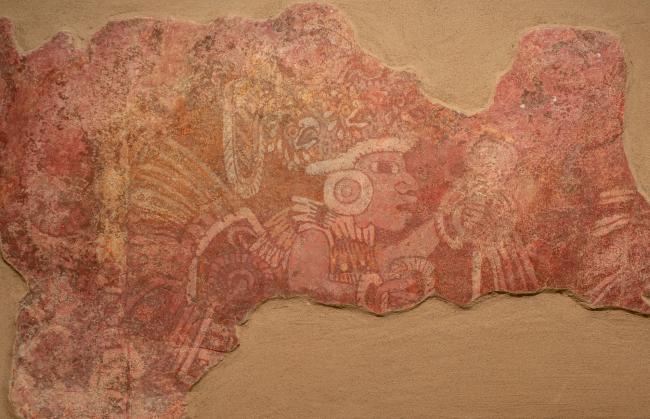
Gran Conjunto
Located next to the Calzada de los Muertos, the Great Complex could have been the mercantile and bureaucratic center of Teotihuacan. In its interior murals from different construction stages were found.
Priest framed with four-petal flowers: In this mural fragment, found in one of the rooms of the Great Complex, a human figure is represented in profile. He carries in his right hand a ritual pouch finished off in its lower part with a serpent's rattlesnake, in the other hand he carries a staff of command with a circular element composed of feathers, bangs and a coiled figure in the upper part.
She wears large circular earmuffs and on her shoulders she wears a kind of cape or canvas with feathers, at the back at waist level, she wears a large adornment in the shape of a rooster tail with ribbons and ribbons fastened with a large brooch. It wears an elaborate headdress adorned with several superimposed bands of bangs, symbolic ornaments, several bird heads with open beaks and ends with long feathers that fall in the back, in front of which is a mat or element formed by intertwined bands; framed by a border of four-petal flower stripes.
Fuente, Beatriz de la (coord.), 1995, La pintura mural prehispánica en México Teotihuacán, volume I, Mexico, UNAM/IIE.
Reticulated felines on sectioned circles: This mural of the Great Set portrays a procession of felines that go from the portico to the central part of the wall at the back of the room. Each feline is in profile and has as base a horizontal line of semicircles, they are profusely adorned with triangular bangs and feathers, decorative elements that appear in the paws, in the tail and in its exuberant headdress, the feathers of this last one are sustained in an arched fringe of triangles, finishing off backwards with a great fan.
They have an open muzzle, from the corners of which comes a fang curved backwards; from the jaws emerge two bands that turn forward, adorned with a kind of eyes with celestial symbols. The murals or panels are framed by a wide band formed by three bands, on which is represented a stylized figure of the head of Tlaloc seen from the front.
Fuente, Beatriz de la (coord.), 1995, La pintura mural prehispánica en México Teotihuacán, volume I, Mexico, UNAM/IIE.




